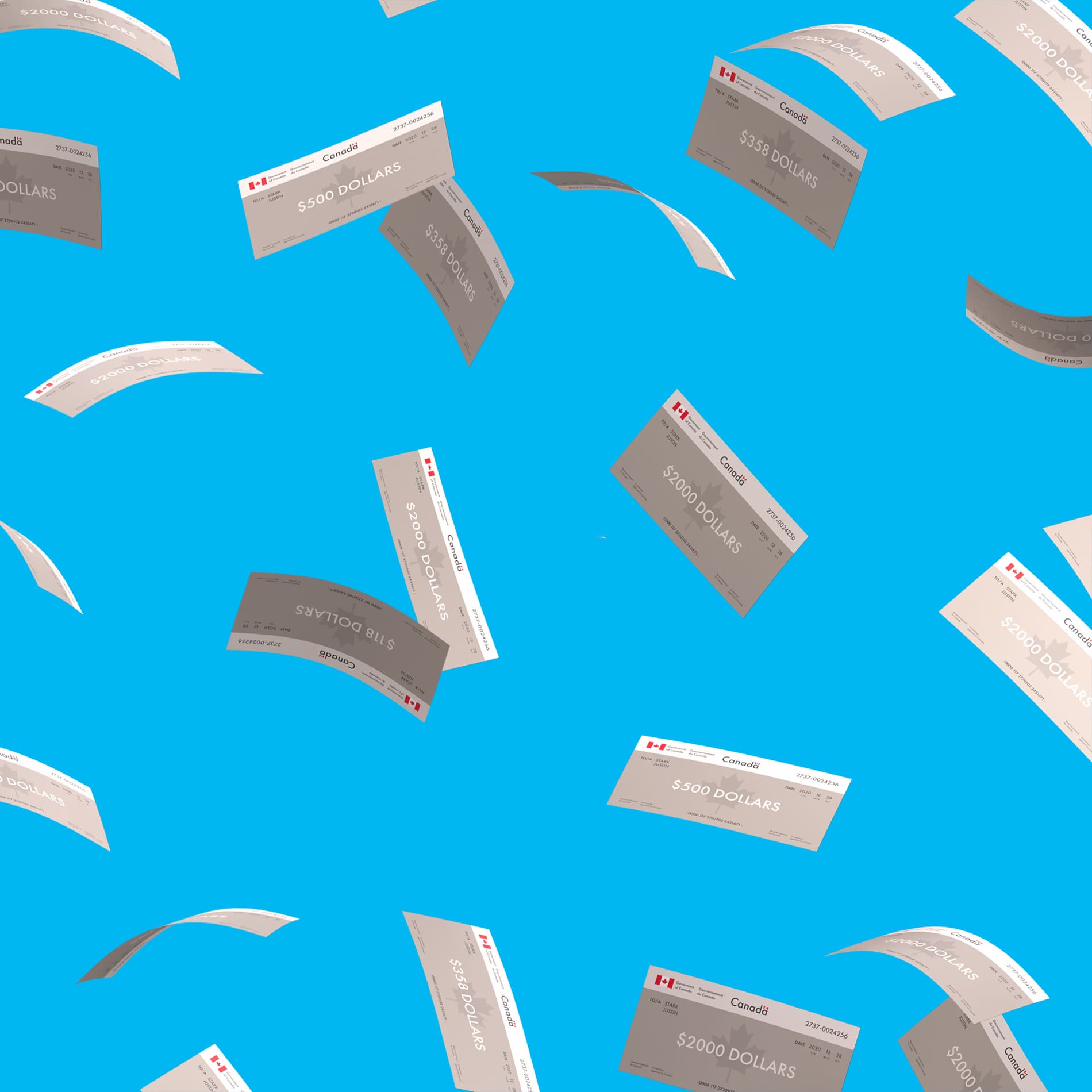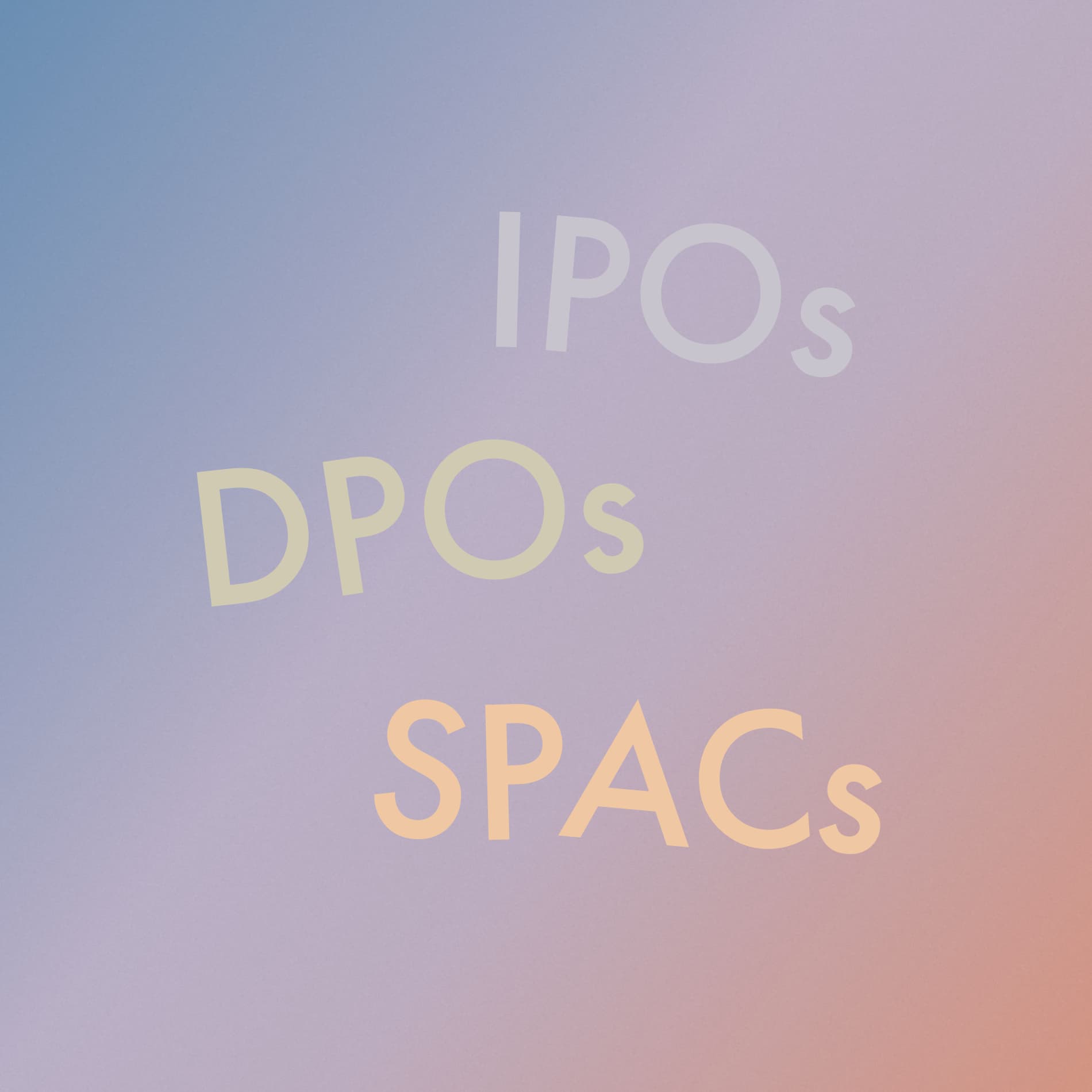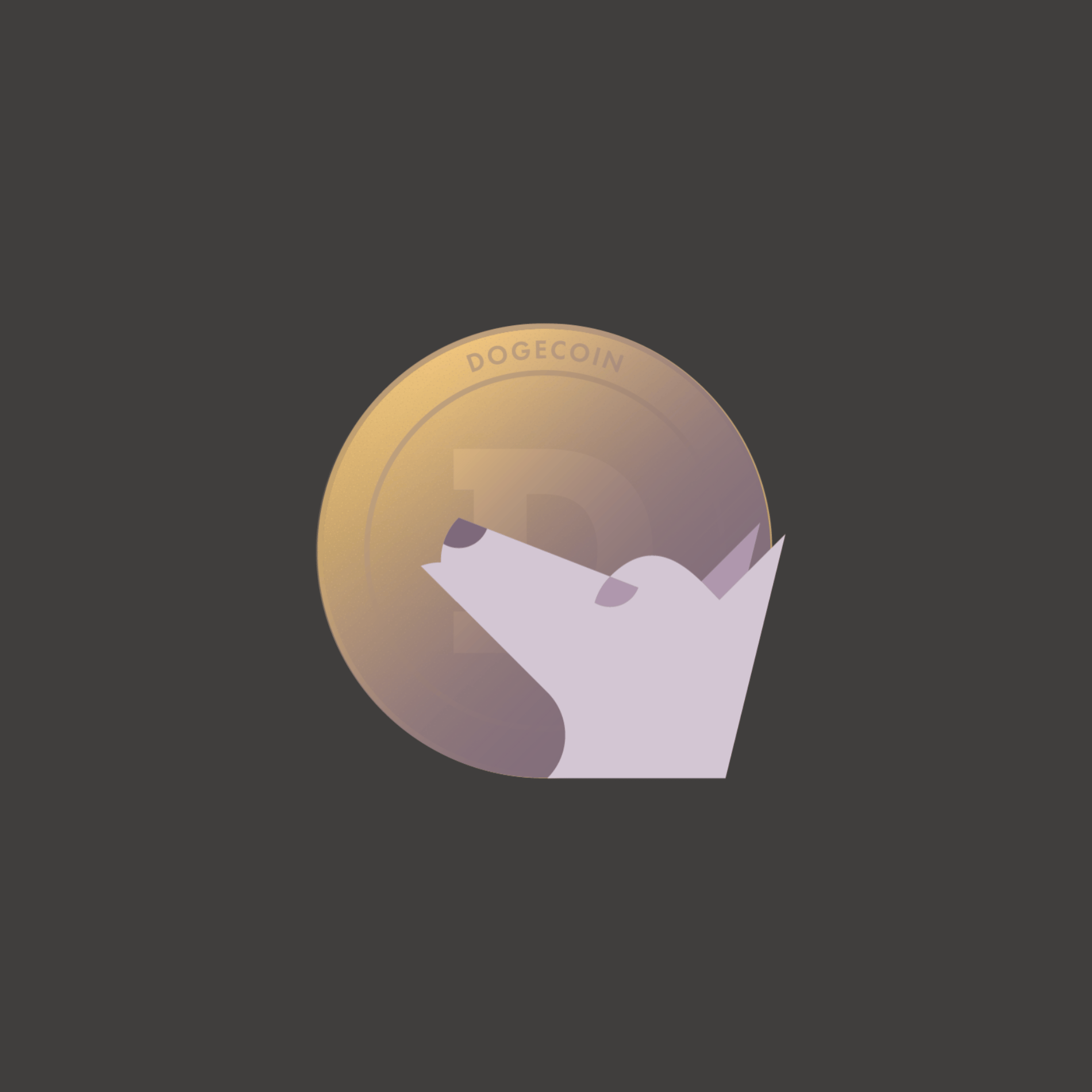
Finance for Humans
Everyone I Knew Was in Crypto. So I Tried It Too, Reluctantly
Crypto is everywhere. And yet it also feels like you need an advanced degree to understand it. Writer Amil Niazi decided to give it a try and learn what everyone was talking about. (And maybe build a little nest egg.)
Wealthsimple makes powerful financial tools to help you grow and manage your money. Learn more
I decided to buy crypto because, like many millennials, my retirement plan has always functionally been to die early. Which would suggest I needed a backup plan. Like somehow finding a way to turn my meager earnings into something resembling a nest egg. And, in the last couple of years, cryptocurrencies more and more began to seem like a good way to do the latter. A friend of mine recently bought a mansion — an actual mansion, with floor-to-ceiling windows and a kitchen island that’s bigger than my bathroom — off Bitcoin proceeds. Another friend banked a mini-retire-early savings pot that will see her living a version of Freedom 45 before I finish paying off my student loans. Of course, I had heard the horror stories, too: the friend of a friend who risked it all and is now headquartered in his parents’ basement as he plots his next move.
I did not want to risk it all — in part because when I started this experiment, I knew basically nothing about crypto. And yet I didn’t want to sit on the sidelines of a market that has grown at an incredible clip. So I wondered: Was there a sensible middle way? Could I ride the wave of crypto-fever as part of a diversified investment portfolio (which is what I’d always been told was the smartest way to save for retirement)? When an editor for Wealthsimple Magazine reached out and asked me to chronicle my first-ever crypto-buying experience, I figured it was some kind of sign. I didn’t know what a crypto wallet was, or blockchain for that matter. But surely these were details that I could figure out along the way.

Sign up for our weekly non-boring newsletter about money, markets, and more.
By providing your email, you are consenting to receive communications from Wealthsimple Media Inc. Visit our Privacy Policy for more info, or contact us at privacy@wealthsimple.com or 80 Spadina Ave., Toronto, ON.
So, with a healthy amount of unearned confidence and the promise of a paycheck for writing this piece (even if my investments exploded, I’d at least have that), and the help of a guy named Danish Ajmeri, Wealthsimple’s Head of Crypto, I dove into the blockchain deep end. I’ve bolded some key rules I picked up along the way.
Step One: Decide How Much to Invest
Since I am a normal, non-wealthy person who would like to avoid making a life-derailing financial blunder — and who, more important, has a young family to feed — I knew from the jump that I wasn’t going to pour an extravagant amount of money into crypto. Redditors and Twitter crypto bulls tend to have an alluring, go-go casino mentality when it comes to buying crypto, and some of them have certainly benefited from big gambles. But cryptocurrencies are extremely volatile, a fact that took me all of, oh, three minutes of online reading to discover. Vegas rules apply. One of the first lessons that Ajmeri told me was extremely simple and extremely important: “Only consider investing what you can afford to lose” (Rule #1). He explained that this should be a guiding principle with any speculative investment, whether you’re plowing money into a friend’s business or into a single stock. Everything could work out incredibly well, but you want to be OK if your investment implodes.
I decided to invest $150. Look, it may not sound like a lot but think of it this way: (1) I have two small children (2) I’m a freelance writer, so my line in the sand is modest these days (3) this was an experiment, I was learning, and I wanted to get comfortable before I risked a meaningful amount. I’d feel happy if my investment went up, but I wouldn’t go broke if cryptocurrencies prices tanked, as they’re famous for doing from time to time. And, yes, I know that there are myriad more complicated ways to invest in crypto beyond cryptocurrencies, but I wanted to keep things simple.
According to Wealthsimple’s research folks, even if you have more money to invest than I did, a good rule of thumb is that crypto should make up no more than 5% of your portfolio (Rule #2) — assuming you care about diversification, don’t want your personal net worth to swing wildly, and don’t want to have a mini-stroke should Bitcoin fall 17% in a not-so-out-of-the-ordinary flash crash. (Hard pass for me on that “net worth swinging wildly part.”)
Step Two: Find a Buddy
Once I decided how much I wanted to invest and resigned myself to the possibility that I could lose all or most of my money, I needed to figure out what crypto actually was, and not just in an abstract, can-bullshit-about-it-over-brunch sort of way. And to do that I needed a buddy. Since I was writing this article for Wealthsimple, I had access to the company’s crypto braintrust — a best-case scenario for a crypto newbie like me. (My aforementioned mansion-owning friend also tolerated a few questions; thanks, Mansion Friend!) But if you lack such professional crypto nerds in your life, a friend, colleague, or acquaintance who’s already trading crypto can serve as a stand-in. Because you will have questions. Probably a lot of them, since crypto is a jargon-rich world, perhaps even more so than traditional finance. Which is saying something. A trustworthy Crypto Companion™ can answer your quick Qs and help you avoid some common crypto pitfalls, like overpaying or not doing enough research. There are also plenty of crypto scams out there — fake giveaways, social-media phishing — but using a reputable brokerage (you know, like Wealthsimple), can help you avoid most of them. A touch of common sense also helps in this department.
Recommended for you

Nervous About Overheated Stocks? Let’s Revisit Four of Our Best-Ever Insights
Finance for Humans

Is This the Year to Try Wealthsimple Tax? (Um, Probably. Yes)
Finance for Humans

The Budget for People Who Hate Budgeting (and Also Want a Bidet)
Finance for Humans

You Probably Shouldn't Panic Sell to Avoid Drawdowns
Finance for Humans
Step Three: Read a Bunch
The best part about having a crypto buddy is that he or she can point you to helpful resources, as Ajmeri did for me. There’s no single, definitive source for crypto news and intel, but Ajmeri suggested that I start by reading a few leading newsletters and blogs (Rule #3). Among them: The Defiant, an insidery, crypto-will-save-the-world guide to investing, and Bankless, which reads as if you’re eavesdropping in a crypto-trader bar, should such a thing exist. Then, of course, there are Wealthsimple’s superb, B.S.-free crypto explainers. Anxious about whiffing my first crypto foray, I blocked out a night to pore through crypto articles. As I skimmed thousands of words about DeFi and blockchain, I felt like a manic student cramming for a final. In Bankless’s starter’s guide, I learned the nuts and bolts of how to begin trading crypto. It’s a BIG document that can send you down endless wormholes — digital nations, the slow leak from fiat money, the great protocol sink. My favourite? The crypto barbell strategy, in which you basically say, Forget somewhat risky, somewhat profitable investments, like stocks and real estate. And instead you allocate 80% of your portfolio to safe, boring investments, like treasury bonds or cash, and then play the crypto lottery with the rest.
I could go on but won’t. Just imagine trying to explain all this to your partner at 3 a.m., and you’ll have some sense of how weird things can get.
Step Four: Choose Your Fighter
I focused my reading on determining which coin I should buy. The trouble is that there are approximately a zillion different cryptocurrencies, and hot takes abound on which is best. “Dogecoin is a shitcoin, Safemoon is a scamcoin, and Bitcoin is a boomercoin,” Litquidity Capital, the Meme King of Wall Street, recently tweeted. I leaned hard on coin explainers for clarity, and ultimately decided to go with second-biggest Ether (ETH), on the Ethereum blockchain, over number-one Bitcoin, mostly because I like rooting for an underdog. Plus, Bitcoin was trading between $50,000 and $60,000 per coin, so I figured Ether, then priced closer to $2,500 US, was a better deal, since experts suggest that it could surpass Bitcoin in value by the year’s end. I can’t say my method was scientific, but I felt reasonably sure in my decision. One of big questions in cryptoland right now is which coins will find everyday, IRL use and, in doing so, retain or rise in value. That means the name of the game is to invest in an array of coins that seem to have staying power (Rule #4) and Ether is generally considered, at least at the moment, a frontrunner in that regard, given developments being made to the Ethereum blockchain. Whichever coin you choose, just try to avoid shitcoins — terrible tokens with no prayer of finding long-term purpose.
Step Five: Buy, Buy, Buy
After staying up late exactly one (1) night to research — as I said, I’m a parent of two young kids, so time is limited — I woke up full of unearned swagger and feeling like a crypto genius, or at least less like a crypto moron. Did I know what I was doing? No, honestly not at all. But did I feel like I could fake it till I made it? Yeah, a little bit.
Anyway, time to buy. I had previously used the Wealthsimple Trade app to make some small stock purchases. This involved downloading the app on my smartphone, providing my Social Insurance Number to prove that I was a real human person, and then depositing funds from my bank. Opening a crypto account took a few extra steps beyond that. Namely, I was prompted to read a few user agreements that made absolutely sure that I knew I could lose everything purchasing crypto. Very reassuring. After that, I chose how much to invest, locked in my order, and pressed buy.
Step Six: Compulsively Look at Your Phone
Over the next few days, I grew obsessed with watching the chaotic swings of crypto prices. While I absentmindedly fed my son dinner, I watched, transfixed, as my investment rose and fell. The glaring light of my Wealthsimple Trade app illuminated the top of my baby’s soft lil head as I simultaneously checked crypto prices and nursed her to sleep. I took my phone to bed to refresh the latest numbers. The price of ETH sometimes rose by dollars a second. Dollars! At one point, my initial $150 spiked to $170. But it soon slid to $145, then hit $68 when crypto prices cratered this summer. Of course, I didn’t want to lose money, but the drama and chaos of the market was, I confess, perversely entertaining? Or maybe frustratingly engrossing? It was something. And I began to understand why retail traders love the stuff.
Step Seven: Become a Crypto Zen Master
So, here I am a few months later, sitting on a beach, sipping a Mai Tai, living off the proceeds of my Ether investment, my all-night market-watching and stressing having paid off handsomely. Just kidding. I’m wiping baby poo off my pyjamas while nursing a lukewarm cup of coffee and thinking about how to make my last freelance cheque stretch until the end of the month. After a few weeks, I got burned out on closely following crypto prices. If you want to invest in crypto long term, consider that ye olde, all-important investment strategy: diversification (Rule #5), regarding both your portfolio composition and which cryptocurrencies you buy. You'd be wise to invest in several. Because some tokens will surely peter out, while others could do well. No one really knows. For me, I’m playing the long game with my modest Ether investment. I still check it every once in a while but rarely every day; crypto is exciting, but also exhausting. And it’s also hard to time when to buy. So I’m treating my ETH as I would any other investment by basically ignoring it and trying not to stress if its value dips. I’ve actually lost $40 since making my initial Ether purchase. Oops. At any rate, next step, NFTs!
*Wealthsimple Magazine is produced by Wealthsimple Technologies Inc. and is for informational purposes only. It is not intended to be investment advice or any other kind of professional advice. When you invest, your money is at risk and it is possible that you may lose some or all of your investment.
Amil Niazi is a writer and producer whose work has appeared in The Cut, The New York Times, The Guardian, and Vice.






